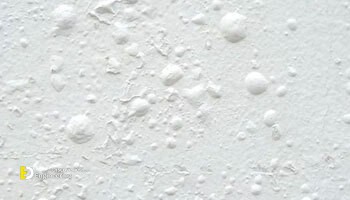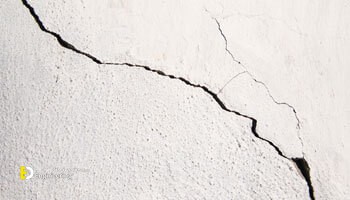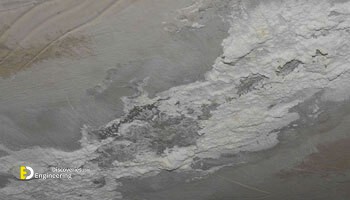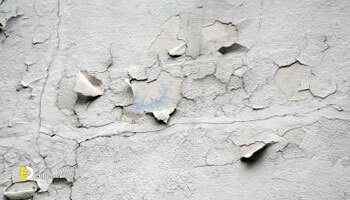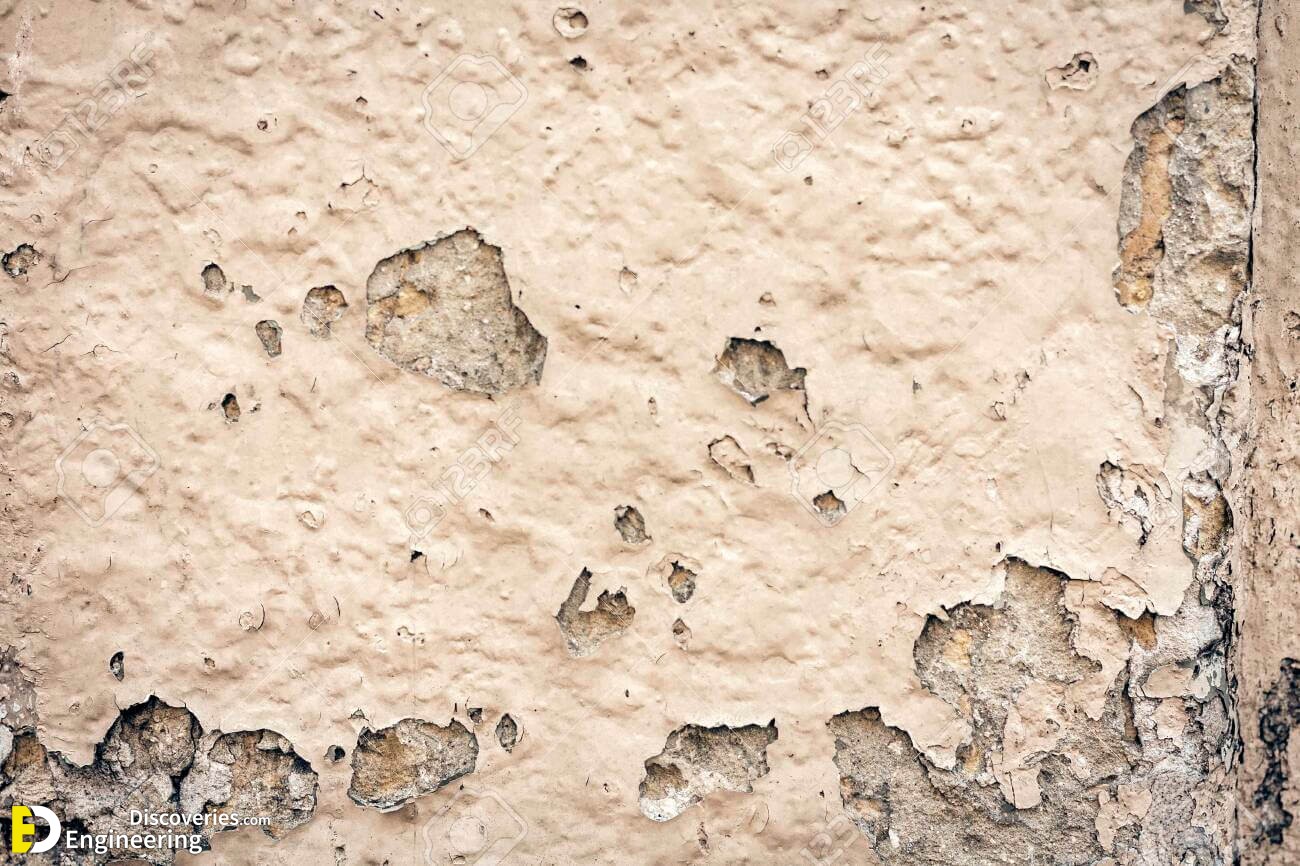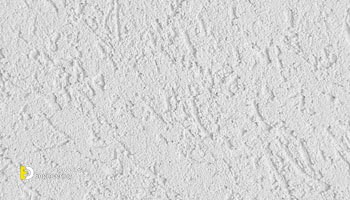Different types of defects occur in plastering work such as blistering, cracks, efflorescence, flaking, peeling, popping, softness and uneven surfaces. These defects in plastering need to be repaired as soon as they are observed.
Types of Defects in Plastering
1- Blistering of Plastered Surface
Blistering of the plastered surface occurs when small patches swell out beyond the plane of the plastered surface. Blistering is seen in case of plastered surface inside the building.
2- Cracks in Plastering
Cracks are formed on the plastered surface. These cracks can be hairline cracks which are difficult to notice, or it can be wider cracks which are easily seen. The development of fine cracks is known as crazing. Cracks on a plastered surface can be due to thermal movements, discontinuity of surface, structural defects in the building, faulty workmanship, excessive shrinkage etc.
3- Efflorescence on Plastered Surface
Efflorescence is a whitish crystalline substance on the surface of a wall. This appearance is due to the unburnt salt present in lime, cement, brick, sand and salt in water. When the wall dries out, the soluble salts absorb moisture from the atmosphere through the pores and get deposited in patches in the form of white crystalline patches. These patches disappear in wet climates and reappear in dry climates. It can be managed to some extent by repeated dry brushing and washing.
4- Flaking
The formation of a very small loose mass on the plastered surface is known as flaking and it is mainly due to bond failure between successive coats of plaster.
5- Peeling
The plaster from some portion of the surface comes off and a patch is formed. Such formation is termed as peeling and it is mainly due to bond failure between successive coats of plaster.
6- Popping
Sometimes the plaster mix contains particles which expand on being set. A conical hole in the plastered surface is formed in front of the particle. This conical hole is called as blow or pop.
7- Uneven Plaster Surface
This defect is purely due to unskilled workers.
8- Softness of the Plaster
The excessive dampness at certain points on the plastered surface makes that portion soft. The main reasons for such softness are undue thinness of the finishing coats, presence of deliquescent salts, excessive suction of the undercoats etc.
9- Rust Stains on Plastered Surface
Rust stains are sometimes seen on the plastered surface especially when plaster is applied on metal lath.


